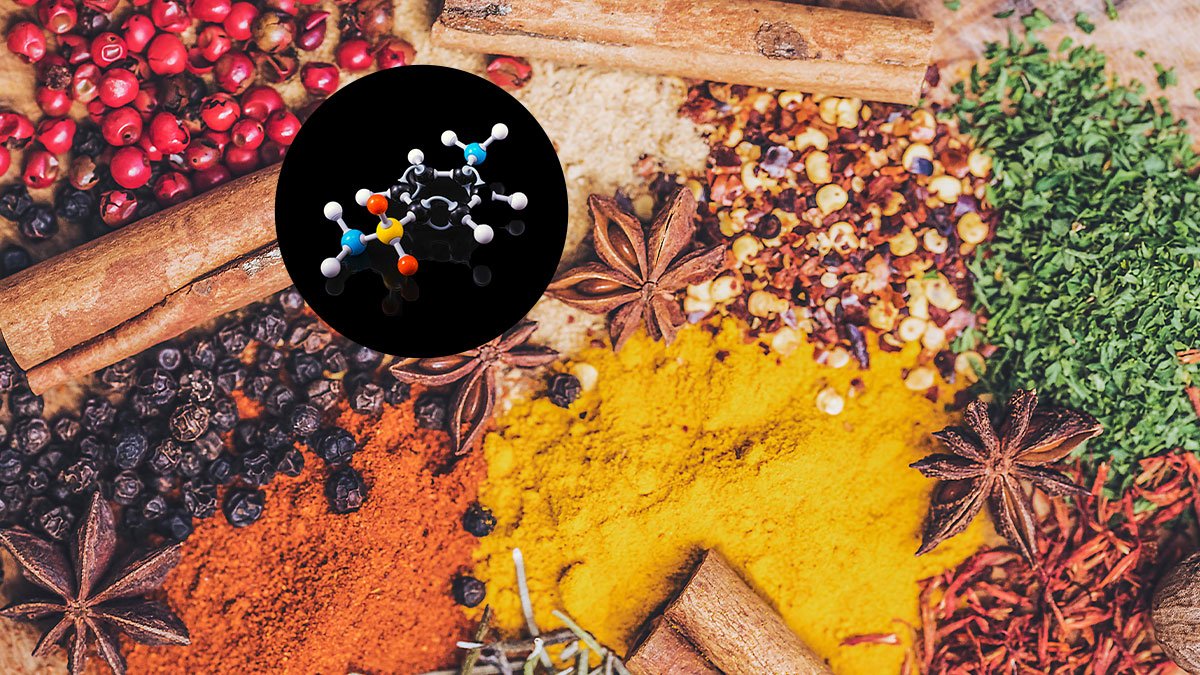
Introduction
Spices have been used for centuries to add flavor and aroma to food. From the sweet smell of cinnamon to the fiery heat of chili peppers, spices have become an integral part of our culinary experiences. But what exactly are spices, and what makes them so flavourful? In this article, we will explore the chemistry behind Spices and Their Flavour Compounds, as well as the health benefits of incorporating them into our diets.
Table of Contents
What Are Spices?
Spices are aromatic substances derived from various parts of plants, such as the roots, stems, seeds, and flowers. They are used to enhance the flavor and aroma of food, as well as to add color and texture. Common examples of spices include cinnamon, cloves, chili peppers, ginger, and turmeric.
The History of Spices
Spices have a long and fascinating history, dating back to ancient civilizations such as Egypt, Rome, and China. Spices were once considered a luxury item, reserved for the wealthy and powerful.

They were used as currency, as well as for their medicinal properties. The spice trade was a major driver of global commerce, leading to the discovery of new lands and the establishment of trade routes.
The Chemical Composition of Spices
Spices are composed of various chemical compounds that give them their unique flavors and aromas. These compounds can be divided into several categories, including essential oils, oleoresins, terpenoids, phenolics, and alkaloids.
Essential Oils

Essential oils are volatile compounds that give spices their characteristic aromas. They are composed of various molecules, such as terpenes and esters, which are responsible for the sweet, floral, or citrusy scents of spices.
Oleoresins
Oleoresins are semi-solid extracts that contain both essential oils and resinous materials. They are used to add flavor and color to food, as well as to create spice blends and marinades.
Terpenoids
Terpenoids are a diverse group of compounds that contribute to the flavor and aroma of spices. They are composed of isoprene units and can be found in various plant parts, such as leaves, flowers, and fruits.
Phenolics
Phenolics are a class of compounds that contribute to the bitterness and astringency of spices. They are composed of aromatic rings and hydroxyl groups and can be found in spices such as cloves, cinnamon, and nutmeg.
Alkaloids
Alkaloids are nitrogen-containing compounds that contribute to the pungency and bitterness of some spices. They are found in spices such as black pepper and chili peppers.
The Flavour Compounds in Spices
Each spice contains aEach spice contains a unique combination of flavor compounds that contribute to its distinct taste and aroma. Here are some examples of the flavor compounds found in common spices:
Cinnamaldehyde in Cinnamon
Cinnamaldehyde is the main flavor compound in cinnamon. It has a sweet, warm, and slightly spicy aroma, and is responsible for the distinctive flavor of cinnamon. In addition to its culinary uses, cinnamaldehyde has been shown to have anti-inflammatory and antioxidant properties.
Eugenol in Cloves
Eugenol is the primary flavor compound in cloves. It has a warm, spicy, and slightly bitter taste, and is used to flavor baked goods, marinades, and curries. Eugenol has been found to have anti-inflammatory and analgesic properties and is used in traditional medicine to relieve pain and inflammation.
Capsaicin in Chili Peppers
Capsaicin is the compound responsible for the heat in chili peppers. It activates the pain receptors in the mouth, causing a burning sensation. Capsaicin has been shown to have anti-inflammatory and pain-relieving effects and is used in topical creams to treat arthritis and nerve pain.
Allicin in Garlic
Allicin is a sulfur-containing compound found in garlic. It has a pungent, spicy, and slightly bitter taste, and is responsible for the characteristic aroma of garlic. Allicin has been shown to have antibacterial and antifungal properties and is believed to have cardiovascular benefits.
Curcumin in Turmeric
Curcumin is the main active compound in turmeric. It has a warm, slightly bitter taste, and is responsible for the vibrant yellow color of turmeric. Curcumin has been found to have anti-inflammatory and antioxidant properties and is being studied for its potential role in preventing and treating cancer.
The Health Benefits of Spices
In addition to their flavourful compounds, spices have been found to have numerous health benefits. Here are some of the ways that spices can improve our health:
Anti-inflammatory Effects
Many spices have been found to have anti-inflammatory properties, which can help reduce the risk of chronic diseases such as heart disease, diabetes, and cancer. For example, curcumin in turmeric has been found to reduce inflammation in the body and improve symptoms of arthritis.
Antioxidant Properties
Spices are also rich in antioxidants, which help protect our cells from damage caused by free radicals. Antioxidants can help reduce the risk of chronic diseases and slow down the aging process. For example, cinnamon has been found to have high levels of antioxidants and may help improve blood sugar control.
Digestive Health

Some spices have been found to improve digestion and reduce symptoms of digestive disorders such as bloating and constipation. For example, ginger has been shown to reduce nausea and vomiting, while cumin has been found to improve digestion and reduce inflammation in the gut.
Anti-cancer Properties
Some spices have been found to have anti-cancer properties, which can help reduce the risk of cancer and improve outcomes for cancer patients. For example, capsaicin in chili peppers has been found to inhibit the growth of cancer cells in the laboratory.
How to Use Spices in Cooking
Now that we know about the flavor compounds and health benefits of spices, let’s explore some ways to use them in our cooking:
Blending Spices
Spices can be blended to create unique and complex flavors. For example, garam masala is a blend of spices commonly used in Indian cuisine, which includes cinnamon, cardamom, cloves, cumin, and coriander.
Roasting and Grinding Spices
To enhance the flavor of some spices, they can be roasted and ground before use. For example, whole cumin seeds can be roasted in a dry pan until fragrant, then ground into a powder for use in curries and spice blends.
Infusing Spices
Spices can also be infused into liquids such as oils and broths to add flavor to dishes. For example, garlic can be infused into olive oil for use in dressings and marinades, while cinnamon sticks can be added to a pot of simmering apple cider for a warm and comforting drink.
Using Spices in Baking
Spices are commonly used in baking to add flavor and aroma to cakes, cookies, and bread. For example, cinnamon is often used in apple pies and muffins, while nutmeg adds a warm and nutty flavor to pumpkin bread.
Conclusion
Spices are not only delicious but also provide numerous health benefits. By using a variety of spices in our cooking, we can enjoy their unique flavors and reap the health benefits they offer. From anti-inflammatory and antioxidant properties to digestive and anti-cancer benefits, spices are a valuable addition to any diet.
FAQs About Spices and Their Flavour Compounds
Can spices help with weight loss?
While there is no magic spice that will cause weight loss, some spices such as cayenne pepper have been found to boost metabolism and help with weight management when combined with a healthy diet and exercise.
How should I store spices?
Spices should be stored in a cool, dry place away from light and heat. It is best to store them in airtight containers to prevent moisture and air from degrading their flavor and aroma.
Are there any risks to consuming large amounts of spices?
Consuming large amounts of spices such as nutmeg and cinnamon can be toxic and cause adverse effects. It is important to use spices in moderation and follow recommended guidelines.
Can spices replace the medication for certain conditions?
While some spices have been found to have medicinal properties, they should not be used as a replacement for medication prescribed by a healthcare professional.
How can I incorporate more spices into my diet?
Experiment with different spices in your cooking and try out new recipes that feature them. You can also add spices to your morning smoothie or sprinkle them on roasted vegetables for added flavor.